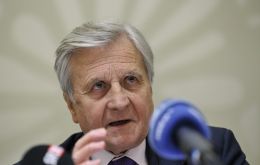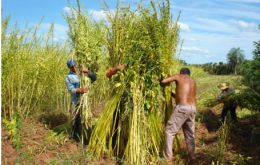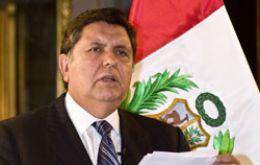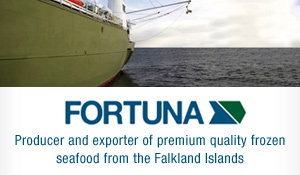MercoPress. South Atlantic News Agency
Tag: commodities
-
Wednesday, May 18th 2011 - 16:46 UTC
Argentina’s poor cousin? Not Uruguay

The following piece by Jude Webber writing for the Financial Times explains the different approach by the two neighboring countries to the windfall earnings of the commodities boom.
-
Monday, May 9th 2011 - 16:54 UTC
Global central bankers concerned with commodity markets’ volatility

Global central bankers voiced concern about recent volatility in commodity markets, saying they needed to better understand its impact on inflation at a time when some emerging economies may be overheating.
-
Wednesday, April 13th 2011 - 00:34 UTC
IMF says much more can be done to rein in fiscal deficits and debts

The outlook for government debts and deficits in 2011 is a mixed bag, with most advanced economies reining in fiscal deficits, but not fast enough to keep their debt from rising. Fiscal balances are improving in most emerging economies, and some could do more as they experience a windfall from high commodity prices and strong capital flows.
-
Saturday, April 2nd 2011 - 08:01 UTC
Vale’s CEO, first victim of Brazil’s policy to cut reliance on commodities exports

Brazil's government is considering creating an iron ore export tax meant to spur investment in local steel production, a leading Brazilian newspaper reported on Friday. The measure is in the framework of President Dilma Rousseff’s intention of cutting Brazil’s reliance on non processed commodities exporter.
-
Sunday, March 27th 2011 - 05:13 UTC
Paraguayan economy expands an all time record of 15.3% in 2010

Boosted by agriculture Paraguay's economy grew an all time record of 15,3% in 2010, following on a 3.8% contraction in 2009, according to the latest release from the Central bank.
-
Saturday, March 19th 2011 - 07:22 UTC
Inflation alarm-bells in Uruguay as consumer prices rise sharply in Jan-Feb

Uruguay's central bank must act swiftly after a surge in consumer prices during the first two months of the year or the economy could suffer “serious problems,” a recognized research company has warned.
-
Wednesday, February 16th 2011 - 17:17 UTC
Uruguayan goods exports mainly commodities; only 2% with high tech input

An overwhelming volume of Uruguayan exports of goods in 2010, --84%-- were commodities and natural resources with some degree of manufacturing but low technological input according to the latest report from the Chamber of Industries.
-
Tuesday, February 15th 2011 - 11:35 UTC
Extreme weather and panic buying send wheat soaring to new highs

Countries anxious to avoid a repeat of the 2007-2008 global food crisis when they were caught short of grain supplies, have stepped up their buying programs and are driving prices to new highs.
-
Monday, February 14th 2011 - 21:50 UTC
Political agreement in Paraguay to impose export levies on soybeans and beef

The Paraguayan government is working with Congress to agree on budget cuts and possible tax increases, (levies on beef and soybean exports) that should help balance 2011 expenditure and revenue.
-
Wednesday, February 9th 2011 - 23:20 UTC
Riding on commodities boom, Peruvian exports reached 35 billion USD in 2010

Peruvian exports in 2010 reached 35 billion US dollars, up 30% from 2009, said Foreign Trade and Tourism minister Enrique Ferreyros. He also pointed out in nine years the number of Peruvian companies involved in exporting jumped from 4.086 to 7.200 and markets from 155 to 178 markets.
